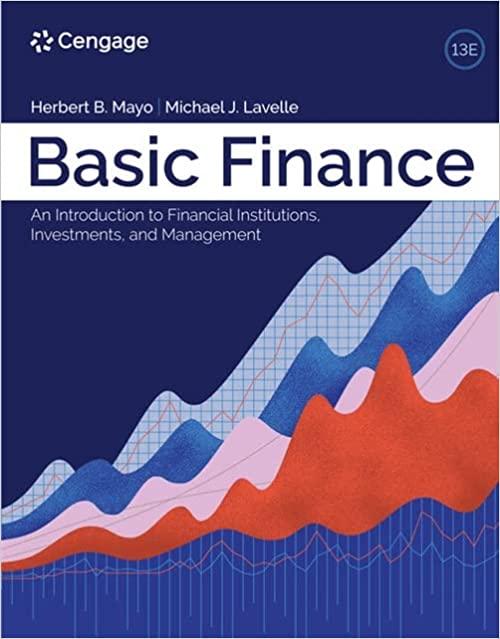Question
Chapter 11 1. The realized gain on disposal is: a. always taxed as ordinary income. b. the amount on which tax is due in the
Chapter 11
1. The realized gain on disposal is:
a. always taxed as ordinary income.
b. the amount on which tax is due in the year of disposal.
c. consideration paid on acquisition, minus consideration received on disposal.
d. the market value of consideration received, minus the adjusted tax basis of property conveyed.
2. The treatment of a gain under the installment sales method is:
a. determined at the time of the sale.
b. determined based on the taxpayers income each year.
c. may change every year depending on when the sale occurred.
d. none of the above.
3. In like-kind exchanges:
a. transaction costs may be considered as a reduction in the proceeds from the old property and a reduction in the realized gain.
b. transaction costs may be considered an increase in the purchase price of the acquired property and a reduction in the realized gain.
c. transaction costs may be considered an increase in the purchase price of the acquired property and an increase in the realized gain.
d. both a and b.
4. The tax basis of property acquired in a like-kind exchange:
a. is the same as the property given up in the exchange.
b. is the same for the new owner as it was for the old owner.
c. is the market value of the acquired property, less any unrecognized gain, or plus any unrecognized loss.
d. none of the above.
5. In a like-kind exchange:
a. gains and losses are always deferred until the property is sold.
b. gains are always recognized in the year of the transaction, but losses are always deferred.
c. gains and losses are recognized in the year of the transaction to the extent "boot" is received or given.
d. gains are recognized to the extent of any "boot" received; gains in excess of "boot" received, and all losses, are deferred.
6. Which one of the following would not qualify as a like-kind exchange?
a. Limited partnership interest for interest in a land trust
b. Vacant land for improved property
c. Rural land for urban land
d. Shopping center for an apartment complex
7. The tax basis of property acquired in a like-kind exchange must be allocated between land and improvements:
a. in the same ratio as used by the previous owner.
b. in a ratio that reflects relative market values of land and improvements at the time of the exchange.
c. in the same ratio as used for the property tendered in the exchange.
d. as specified in the exchange agreement.
8. In a like-kind exchange, gains are:
a. recognized in the year of the transaction.
b. deferred only if all parties to the transaction qualify for like kind exchange treatment.
c. deferred only if neither party has a loss on the transaction.
d. recognized to the extent of any "boot" received; the remainder is deferred.
9. The substitute tax basis of property acquired in a like-kind exchange:
a. is always the same as the basis of the property tendered in the exchange.
b. is always the same for the new owner as it was for the old, unless "boot" is involved.
c. is the same for the new owner as it was for the old, even if "boot" is involve.
d. is the market value of the substitute property, minus any deferred gain, or plus any deferred loss.
10. Losses realized in a like-kind exchange:
a. are recognized to the extent of "boot" received; the balance is deferred.
b. must be fully recognized in the year of the transaction, without regard to the existence of "boot".
c. must be fully deferred, without regard to the existence of "boot".
d. are recognized currently or deferred, at the option of the taxpayer, providing no "boot" was received.
11. The Unified Gift and Inheritance Tax:
a. is levied on the recipient of a gift or inheritance.
b. is based on the market value of the gift or inheritance.
c. is added to the recipients adjusted tax basis.
d. all the ab
Step by Step Solution
There are 3 Steps involved in it
Step: 1

Get Instant Access to Expert-Tailored Solutions
See step-by-step solutions with expert insights and AI powered tools for academic success
Step: 2

Step: 3

Ace Your Homework with AI
Get the answers you need in no time with our AI-driven, step-by-step assistance
Get Started


